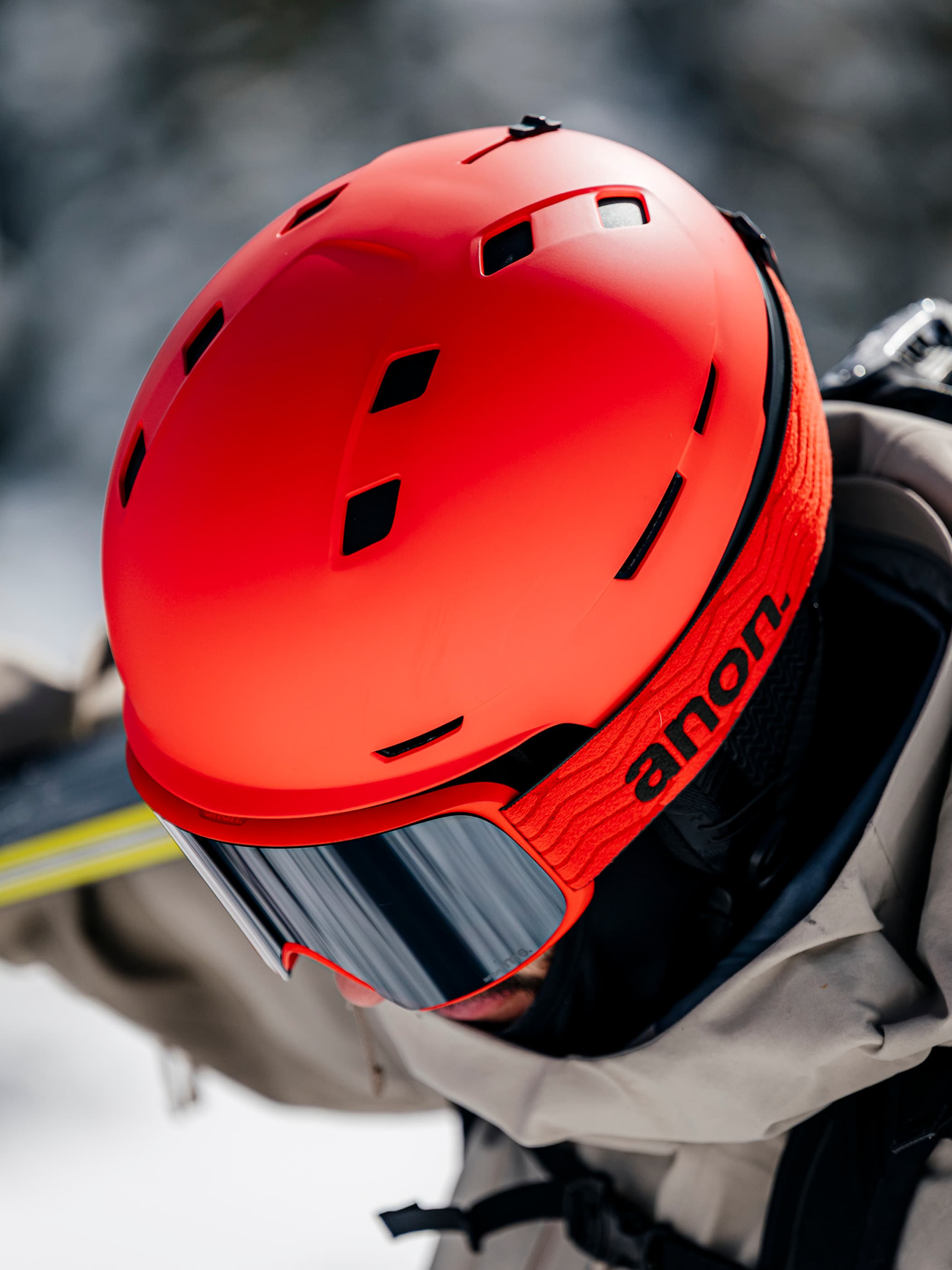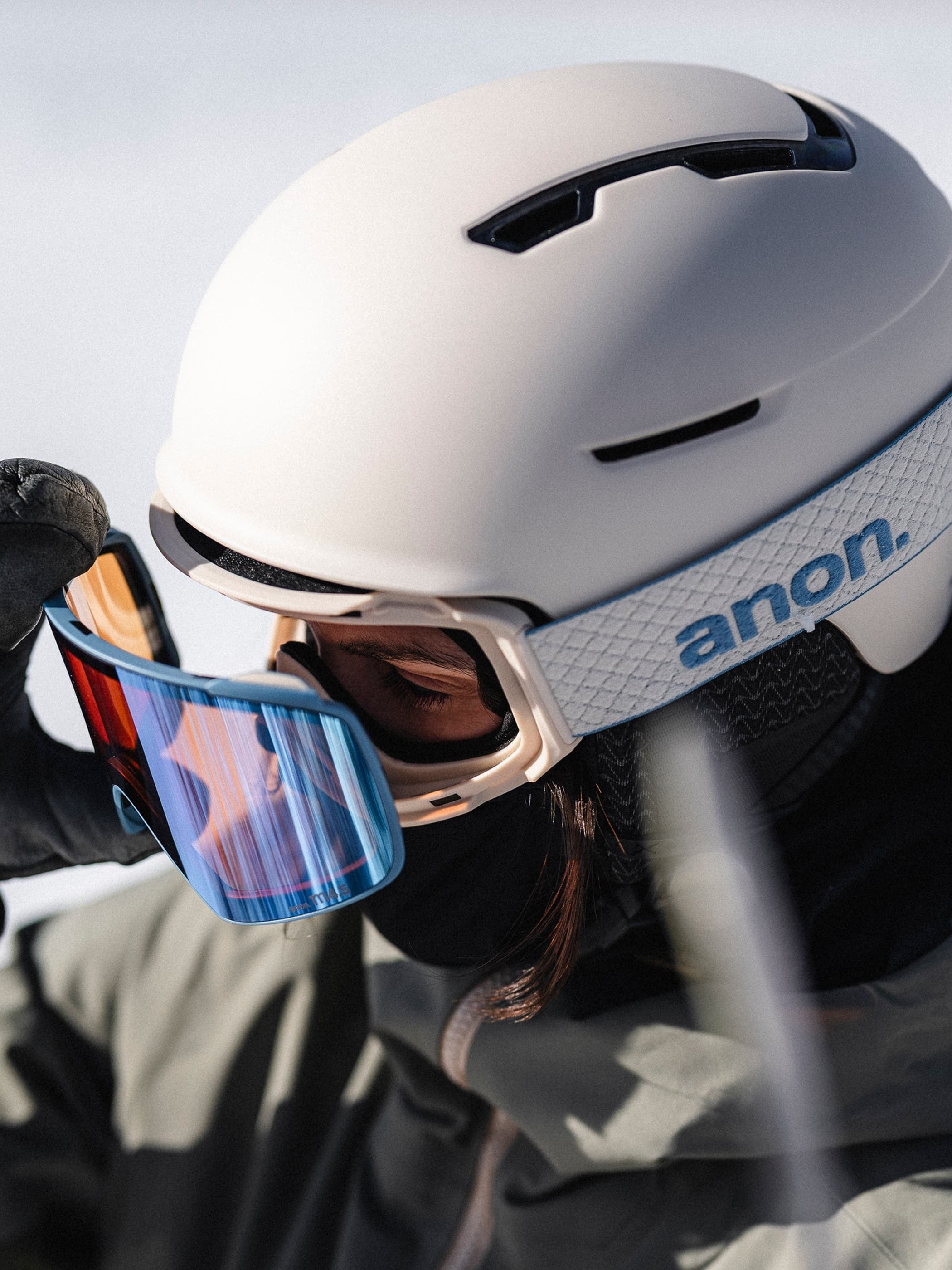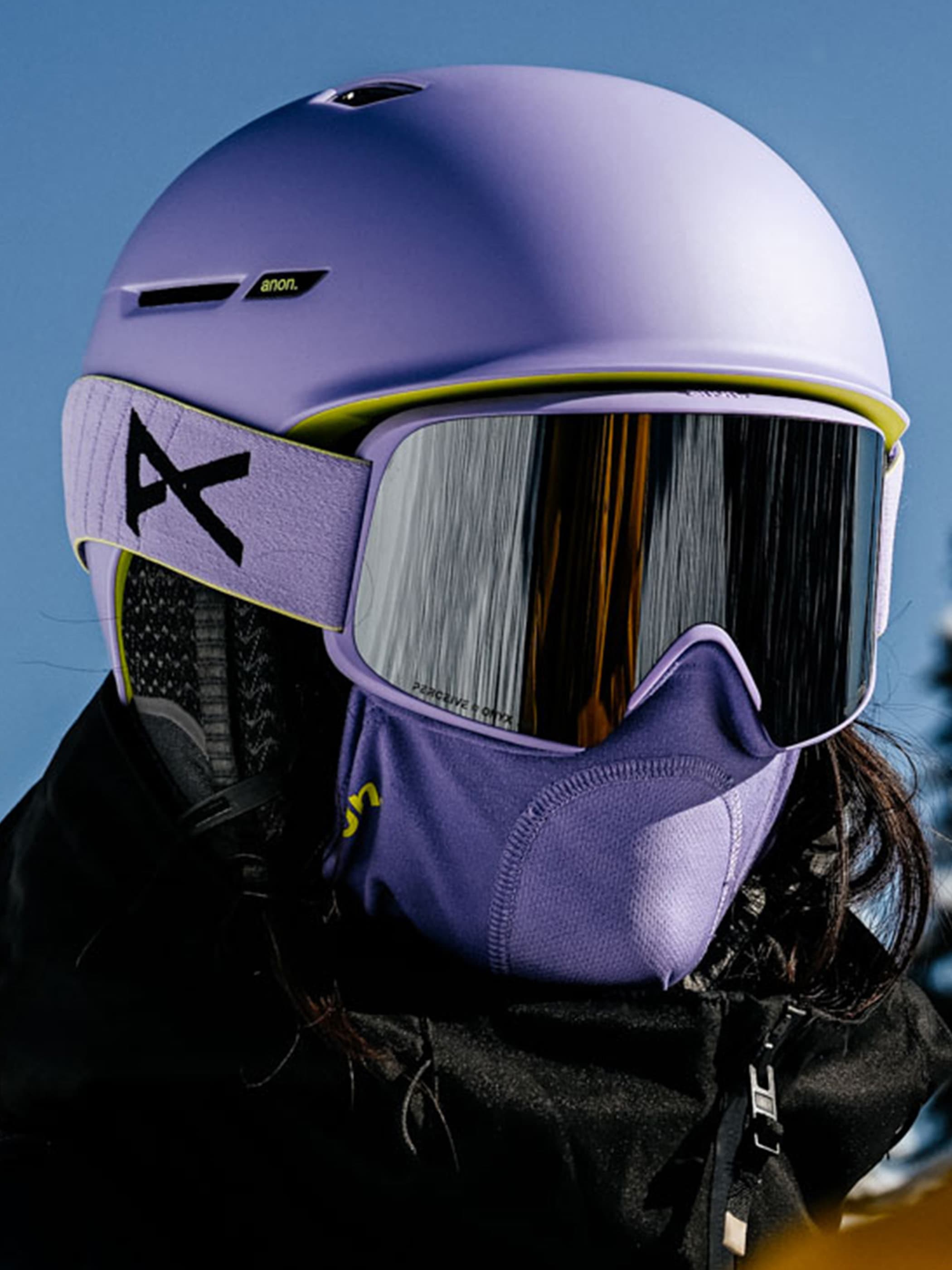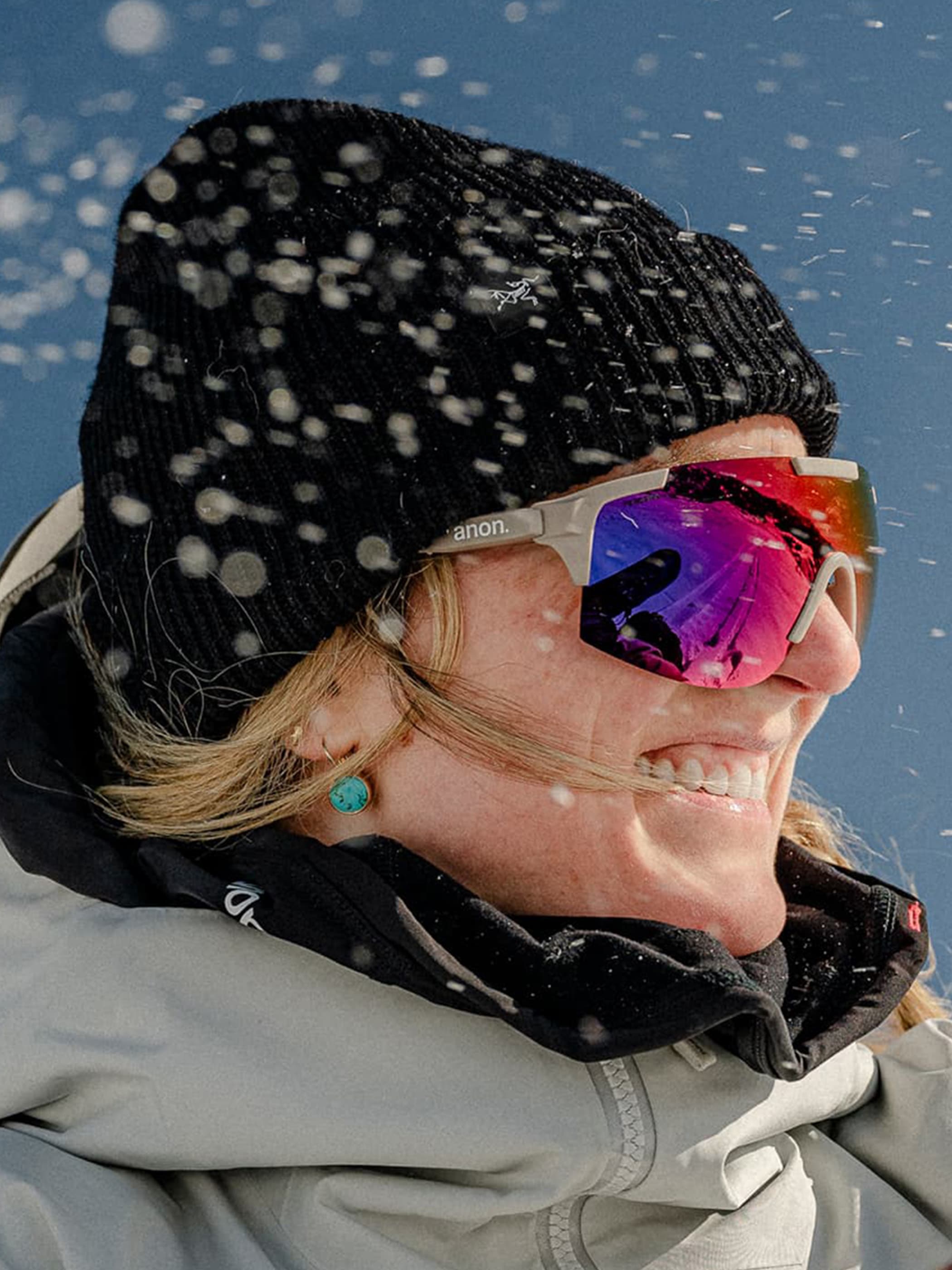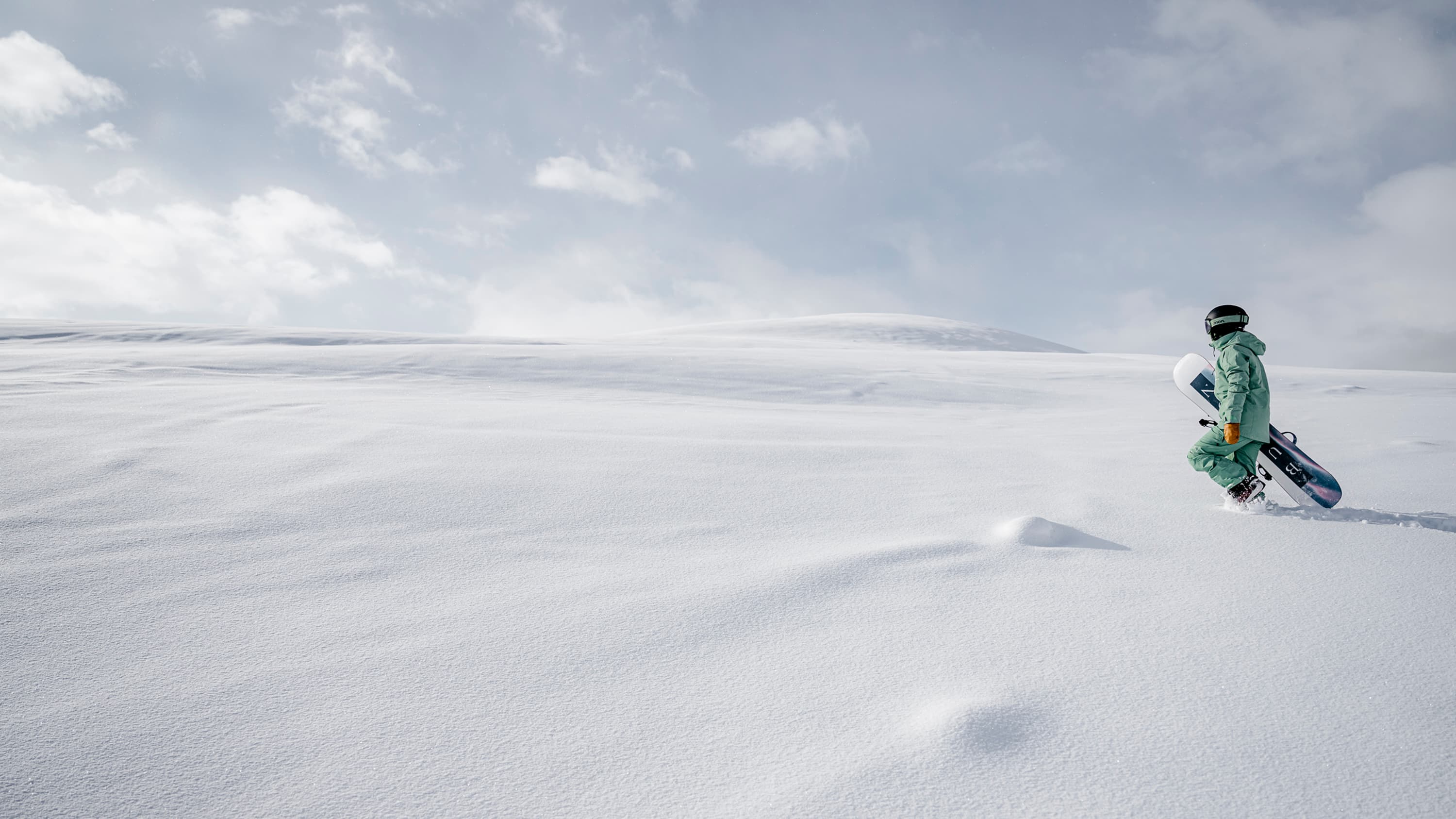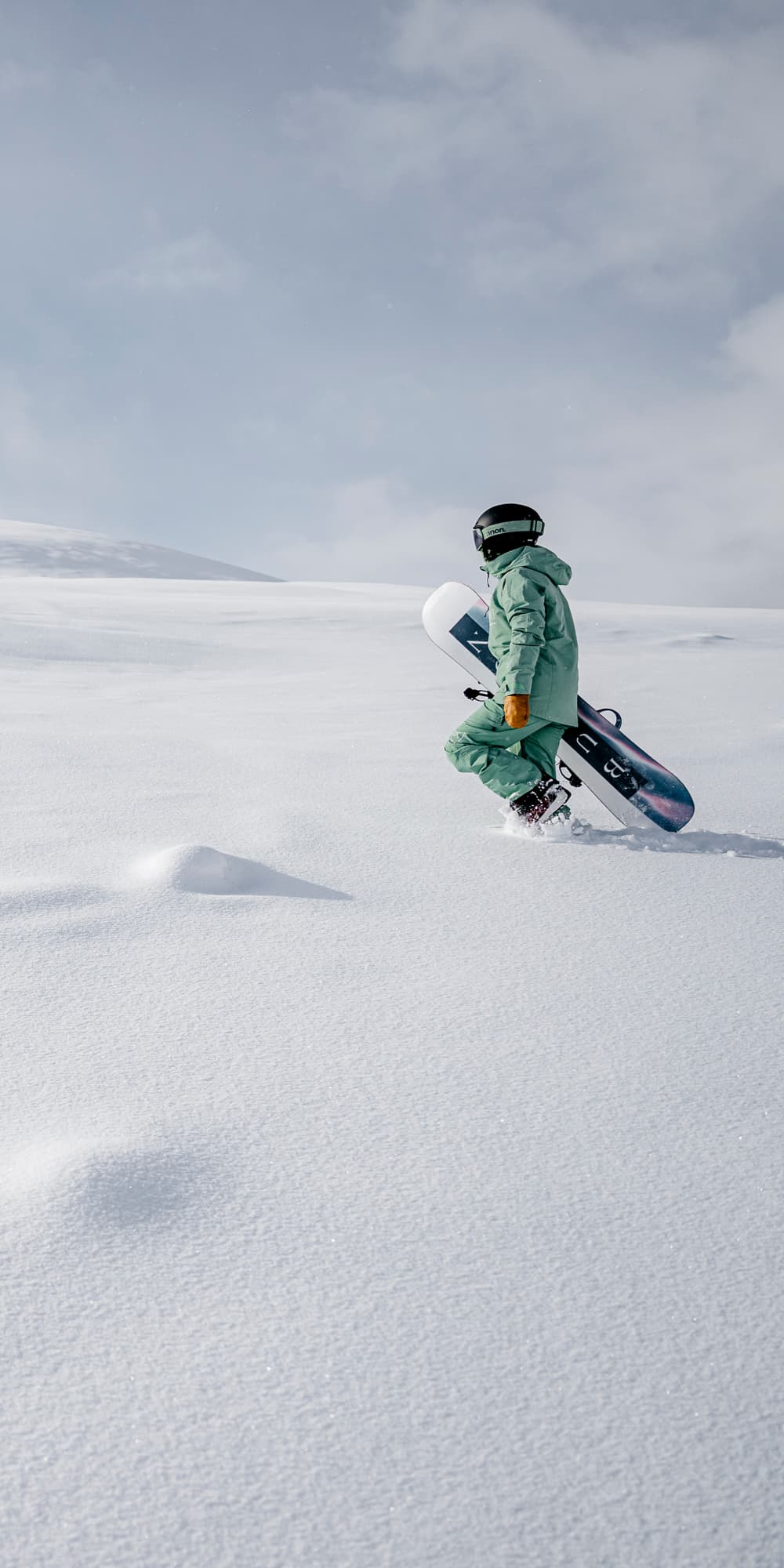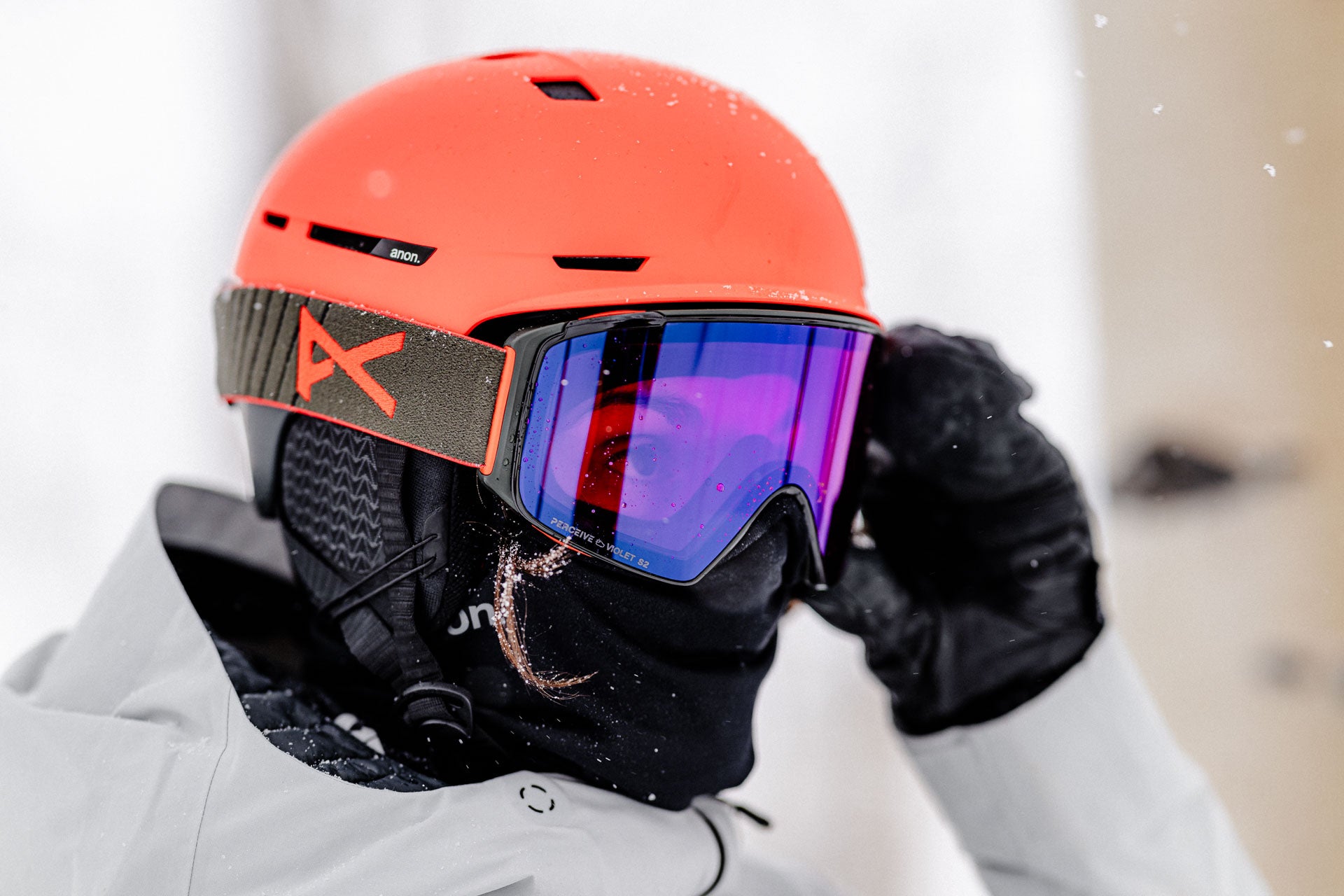
Written by Kimberly MacKenzie
Get a Seamless Fit with Anon’s Helmet & Goggle Compatibility Guide
Helmet and goggle compatibility is about more than just looking good on the slopes; it’s about ensuring that your two most important pieces of safety equipment function properly and don't hold you back. Poor helmet and goggle pairings can create a forehead gap (also known as gaper gap), cause uncomfortable pressure points on the nose and face, and even prevent proper helmet fit. Ultimately, it’s much easier to avoid these problems in the first place than needing to address them on the hill.
In Anon’s guide to helmet and goggle compatibility, we’ll explain why helmet and goggle compatibility matters, what to look for when shopping, and review Anon's helmet and goggle compatibility chart. We’ll also address common problems and solutions to compatibility and fit issues.
Quick Navigation
- Helmet & goggle compatibility: Why it’s Important
- Do ski goggles fit all helmets?
- Matching a Helmet & Goggles: What to Look for and Shopping Tips
- Anon Helmet & Goggle Compatibility Chart
- Helmet & Goggle Fit Issues & Fixes
Helmet and goggle compatibility: Why it’s Important

Helmet and goggle compatibility is important for a variety of reasons, but most importantly for safety. A poor fit can lead to uncomfortable pressure points on the face and nose,
limited vision due to foggy lenses, and improper helmet fit, which is a big problem if you have a collision.
Less important than safety (but possibly more annoying), if your helmet and goggles don’t work well together, you could end up spending hours fiddling with your gear. And when the conditions are firing, there’s nothing worse than troubleshooting equipment problems when you could be focusing on powder turns.
TLDR: Proper helmet and goggle compatibility means a higher degree of safety on the hill, and more fun.
Do ski goggles fit all helmets?
 Not all ski goggles fit every helmet, so don’t make any assumptions when purchasing new equipment. The two most common areas where fit may not align are:
Not all ski goggles fit every helmet, so don’t make any assumptions when purchasing new equipment. The two most common areas where fit may not align are:
- The interface between the top of the goggle frames and brim of the helmet
- The sides of the goggle frames and side of the helmet, near the ears
When these areas don’t align properly, they can cause gaps, where bare skin is exposed to the elements, or unwanted contact between the goggles and helmet, causing them to shift or create uncomfortable pressure points on the face.
Matching a Helmet & Goggles: What to Look for & Shopping Tips

To match a helmet and goggles, you should choose a combo that pairs seamlessly, delivering three things: a gap-free fit, adequate ventilation, and all-day comfort.
- Gap-free Fit: There should be no significant gap between the top of the goggles and brim of the helmet (where it crosses your forehead).
- Adequate Ventilation: When worn together, your goggles and helmet should not interfere with goggle ventilation – this helps prevent your lenses from fogging.
- Comfort: Your goggles and helmet should be comfortable. Neither should interfere with the other or create uncomfortable pressure points that distract from skiing of riding.
In addition to these three key points, here are some additional shopping tips to consider when purchasing helmets and goggles.
- Mixing and matching gear from different brands isn't taboo, but sticking within a single manufacturer’s ecosystems (and consulting their fit charts) makes selecting a helmet and goggles that are compatible much easier.
- Shopping online can be extremely convenient, but we recommend at least trying equipment on in-person at your local store to ensure correct helmet and goggle compatibility and fit.
- Invest in quality goggles and helmets that are backed by warranties and/or helmet crash replacement policies. Anon helmets and goggles carry a one-year warranty on parts and labor, and our helmets are also covered by a two-year crash replacement policy.
If shopping for a whole new kit (both helmet & goggles), we recommend choosing your helmet first. Once you’ve found a model that has the features you need, a fit that works for your head, and a style that appeals to you, select your goggles. If you are just shopping for goggles or a helmet individually, make sure to bring your existing goggles or helmet to your local shop, so you can test everything together and ensure a good fit. This is a normal (and smart) practice, so don't feel awkward about doing it.
Anon Helmet & Goggle Compatibility Chart
Anon makes it easy to pair our helmets and goggles; just review our compatibility chart, which allows you to cross-reference our most popular goggle frames with our Global fit and Round fit helmet sizes.

It’s important to understand that shopping with our helmet and goggle fit guide is just a starting point as everyone has slightly different facial proportions. When possible, try on helmets and goggles in person to ensure compatibility and a fit that works for you.
How to Test Fit Goggles and Helmets at Home or In-store We’ve mentioned it several times: it’s crucial that your helmet and goggles fit properly, for comfort and safety. Instead of assuming that your equipment will work, we recommend testing fit at home or in-store. Follow our quick and easy test fit guide to get the perfect fit.
We’ve mentioned it several times: it’s crucial that your helmet and goggles fit properly, for comfort and safety. Instead of assuming that your equipment will work, we recommend testing fit at home or in-store. Follow our quick and easy test fit guide to get the perfect fit.
- Start by putting on your helmet and adjusting it as necessary. It should fit low, and snug, without being uncomfortably tight. When fitted properly, your ski or snowboard helmet should contact all the way around your head, with no noticeable gaps or spaces. Shake your side to side, and forward and backward; your helmet should remain solidly in place, without shifting forward
- Next, put on your goggles, adjusting the strap as necessary so that they fit over the outside of your helmet, with the strap secured under the goggle clip (if your helmet has one).
- Look in a mirror and note the interface between the top of the goggle frame and the brim of the helmet. The curve of the goggle frame should nest seamlessly with the curve of the helmet brim, with no major gap, and no skin exposed. If you can poke your finger between the top of the goggle frame and the brim of the helmet, fit could be better.
Helmet & Goggle Fit Issues and Fixes
 If you are experiencing discomfort, or other problems with goggle and helmet fit (compatibility), review the following list for causes and solutions.
If you are experiencing discomfort, or other problems with goggle and helmet fit (compatibility), review the following list for causes and solutions.
Problem & Cause:
Pain on the bridge of nose from goggle pressure. Goggles may be too large for your helmet causing them to be pushed down, putting excess pressure on the bridge of your nose.
Solution:
Test goggles with a smaller frame for better helmet compatibility.
Problem & Cause:
Cold air getting into goggles near nose. Possibly caused by poor fit between nose and frame of goggles, resulting in a gap.
Solution:
Test a pair of goggles featuring low-bridge fit.
Problem & Cause:
Difficulty breathing through nose. Goggles may be too tight, or too small for your anatomy.
Solution:
Try loosening goggle strap. If this doesn’t work, test goggles with a larger frame.
Problem & Cause:
Cold air hitting forehead between goggles and helmet. Poor helmet and goggle compatibility resulting in exposed skin.
Solution:
Test goggles with a larger frame that interface more seemlessly with brim of helmet. If your goggles fit well, try a different helmet that provides more forehead coverage and interfaces better with existing goggles
Problem & Cause:
Goggles fogging up while skiing or snowboarding. May be caused by blocked goggle ventilation channels, or general overheating because of poor layering choices for the given conditions.
Solution:
Ensure that goggle vents are not obstructed by helmet, and if necessary, try alternative helmets. If your helmet has ventilation holes that can be opened or closed, try opening them. If goggles continue to fog, consult Anon's guide to preventing goggles from fogging.
